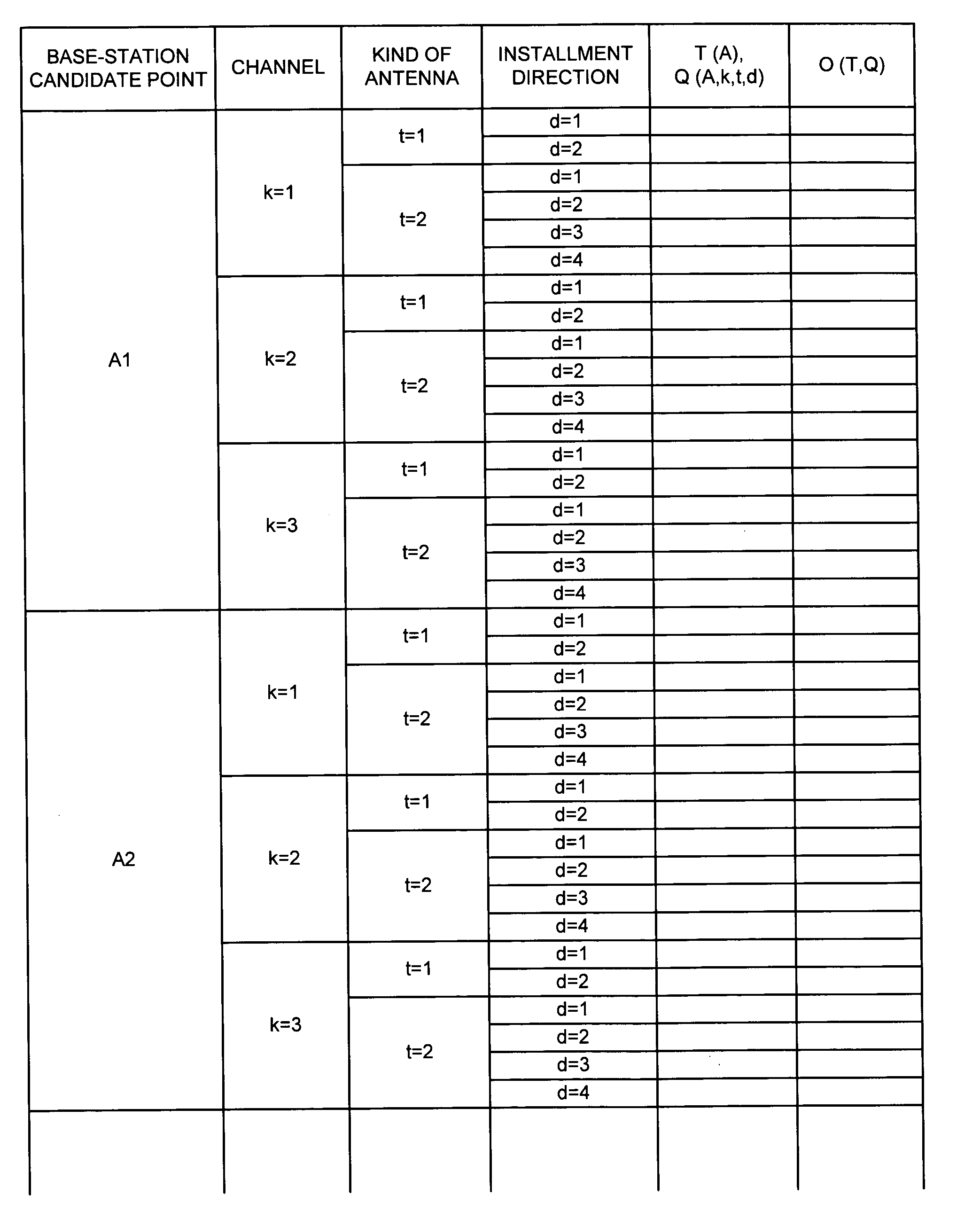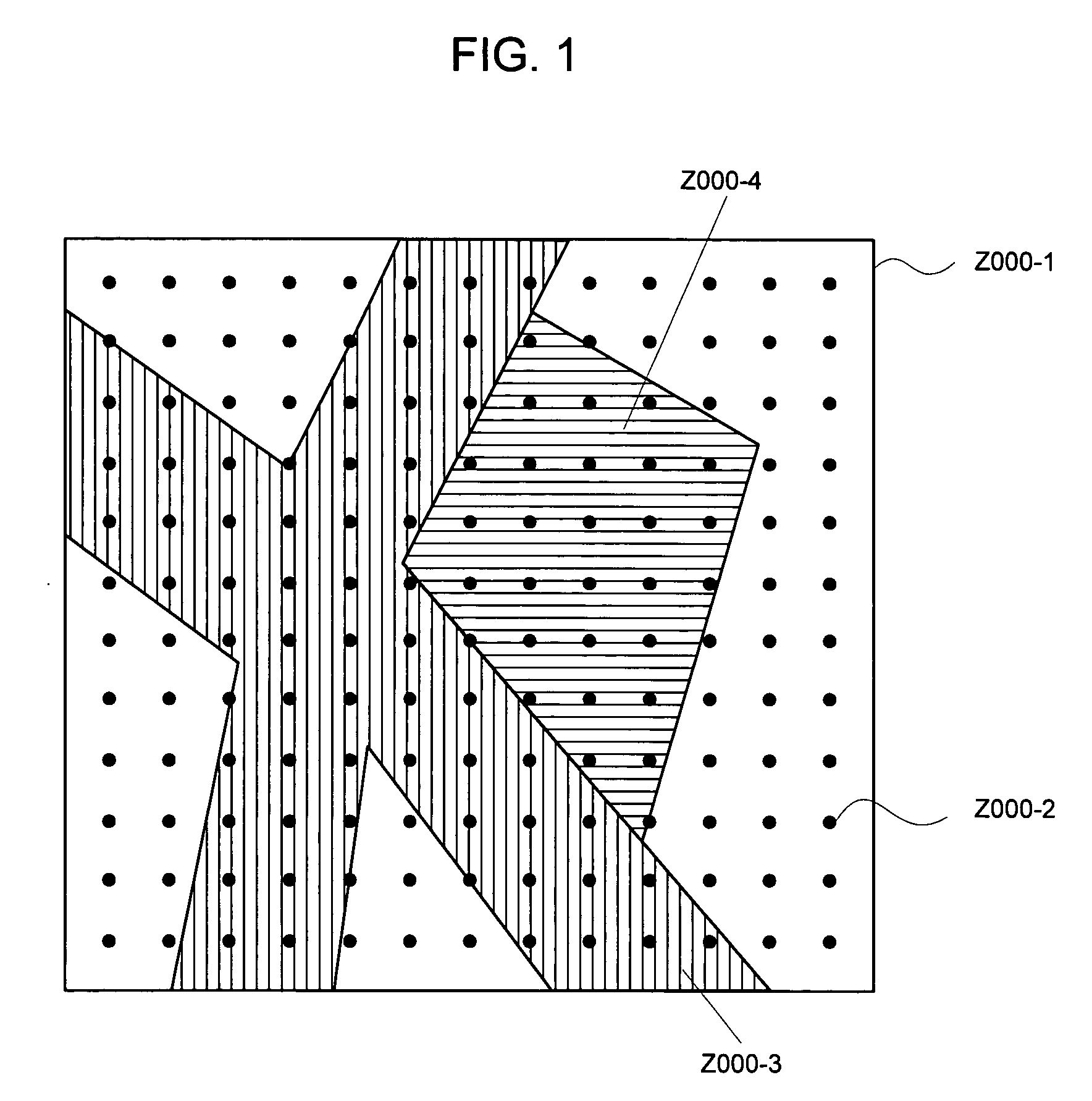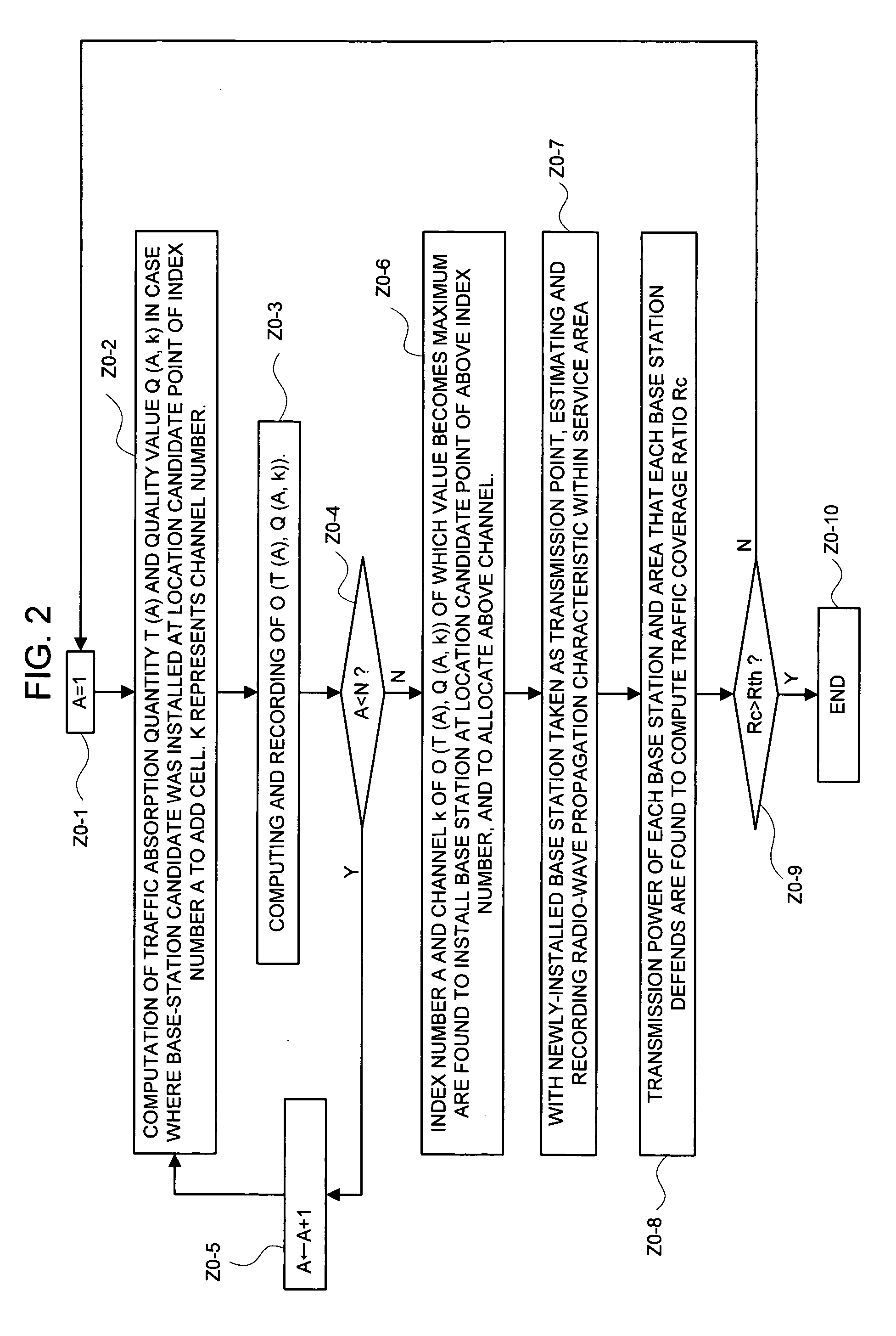Base-station cell design method and base-station cell design apparatus, and program thereof in mobile communication system
a technology of base station cell and design apparatus, which is applied in the direction of multiplex communication, transmission monitoring, wireless commuication services, etc., can solve the problems of loss estimation, unrealistic processing time to gain a solution, and the size of the area that can be designed within the realistic processing time does not come up to the necessary size of the area by far. , to achieve the effect of fast base station cell design
- Summary
- Abstract
- Description
- Claims
- Application Information
AI Technical Summary
Benefits of technology
Problems solved by technology
Method used
Image
Examples
Embodiment Construction
[0060]Embodiments of the present invention will be explained in details below by referring to the accompanied drawings. Firstly, the base-station cell design algorithm of the present invention premises that the service area, the base-station location candidate point, and the traffic distribution are given (for example, the traffic distribution can be estimated from the traffic quantity etc. on a road that exists within a service area Z000-1). FIG. 1 is a view illustrating a setting example of each parameter thereof. Z000-1 represents the service area, and a small black circle Z000-2 indicates one of the base-station location candidate points. Also, there is also a case where the location candidate point is three-dimensionally specified, and there is a case where a plurality of observation points are specified that have an identical XY coordinate, and yet have different Z-axis coordinates respectively. Furthermore, there is a case where the setting is made of the location candidate h...
PUM
 Login to View More
Login to View More Abstract
Description
Claims
Application Information
 Login to View More
Login to View More - R&D
- Intellectual Property
- Life Sciences
- Materials
- Tech Scout
- Unparalleled Data Quality
- Higher Quality Content
- 60% Fewer Hallucinations
Browse by: Latest US Patents, China's latest patents, Technical Efficacy Thesaurus, Application Domain, Technology Topic, Popular Technical Reports.
© 2025 PatSnap. All rights reserved.Legal|Privacy policy|Modern Slavery Act Transparency Statement|Sitemap|About US| Contact US: help@patsnap.com



